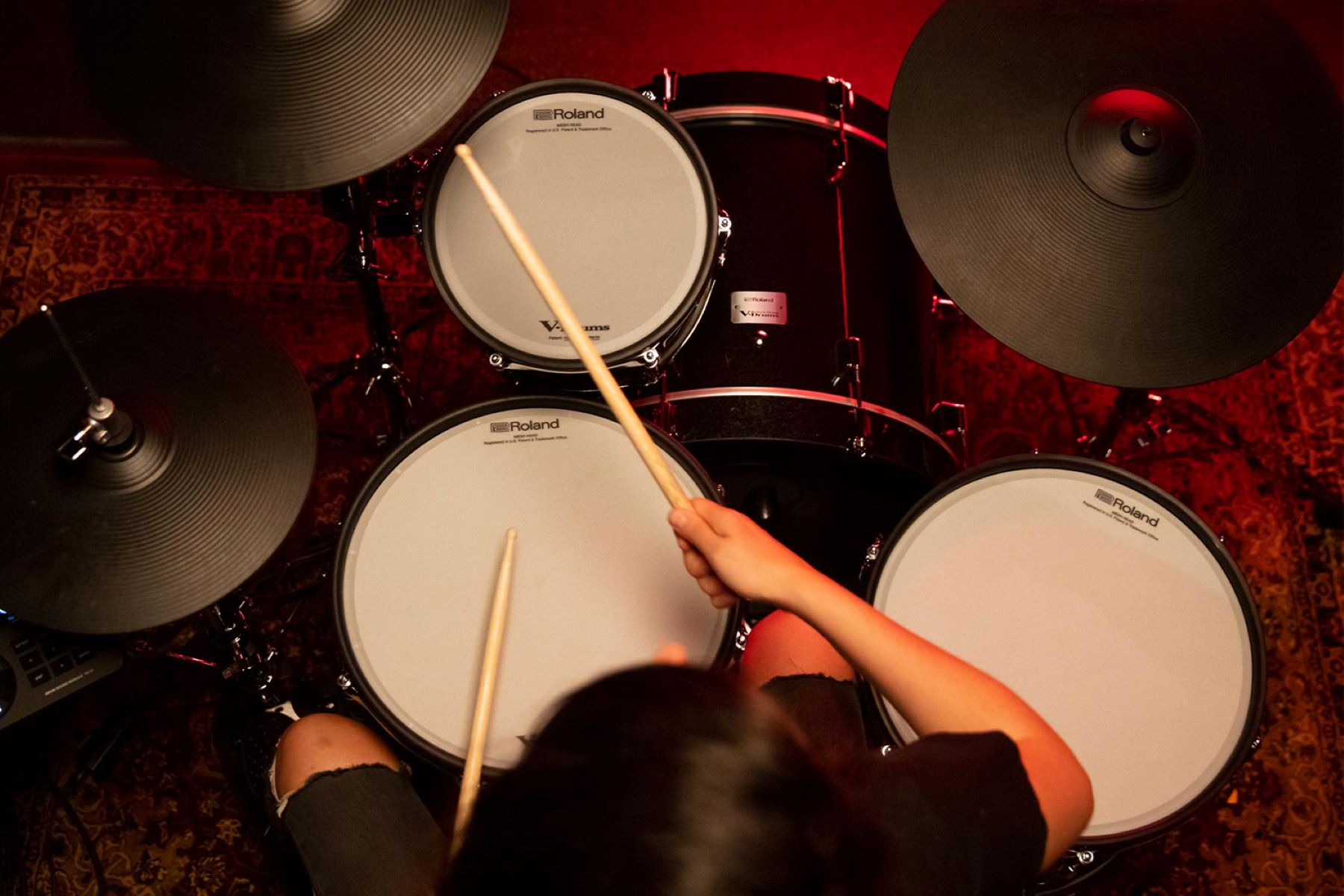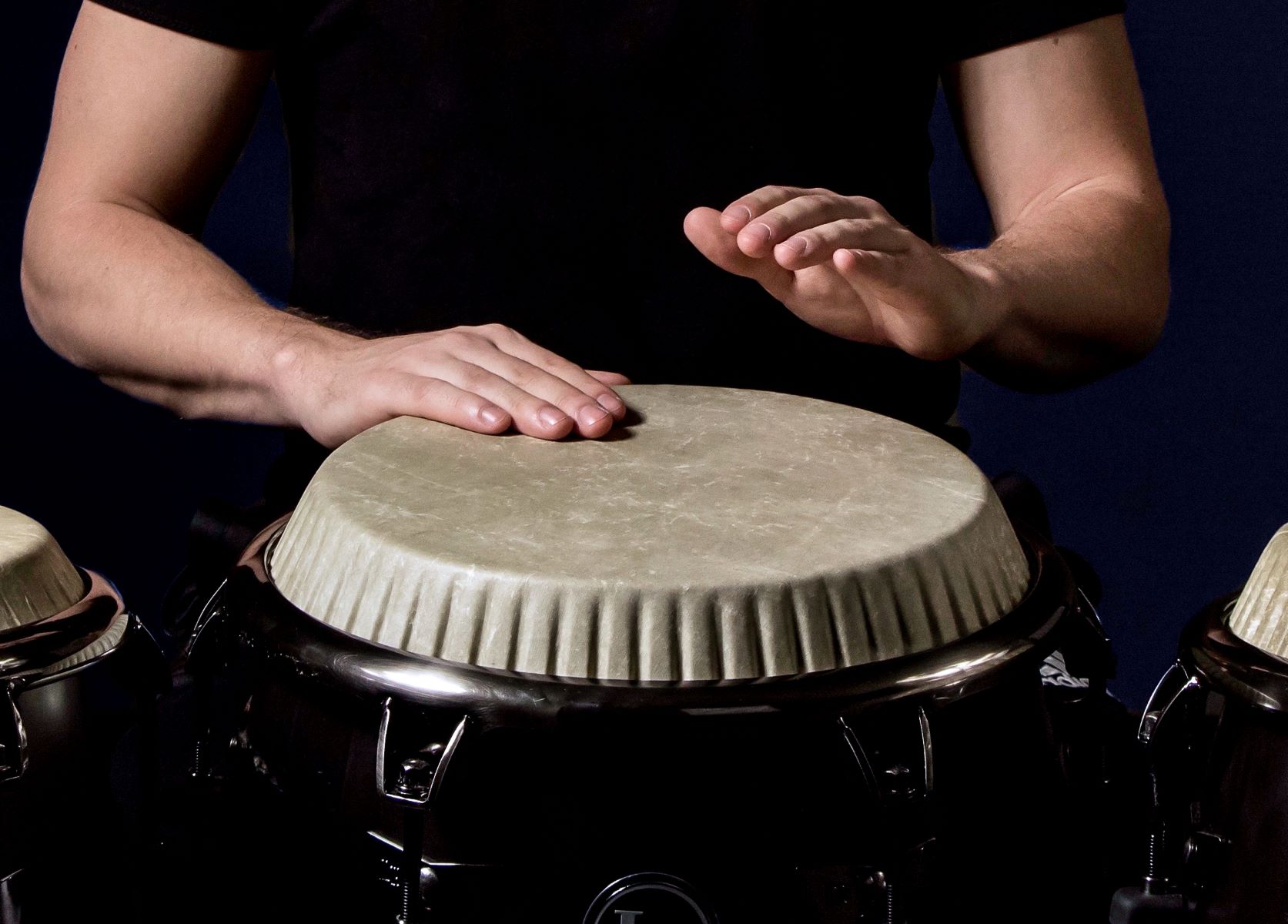Home>Instruments>Drums>How To Play Songs On Drums


Drums
How To Play Songs On Drums
Published: February 8, 2024
Learn how to play songs on drums with our step-by-step guide. Master the art of drumming and enhance your musical skills today!
(Many of the links in this article redirect to a specific reviewed product. Your purchase of these products through affiliate links helps to generate commission for AudioLover.com, at no extra cost. Learn more)
Table of Contents
Introduction
Introduction
Playing the drums is an exhilarating and rhythmic experience that can captivate both the player and the audience. Whether you're a beginner or an experienced musician, the drums offer a unique form of expression and creativity. The ability to play along with your favorite songs can be incredibly rewarding and enjoyable. In this article, we will explore the process of playing songs on the drums, from getting started with drumming to mastering basic techniques and learning drum beats. By the end, you'll have the knowledge and confidence to dive into the world of drumming and unleash your musical potential.
The drums are a vital component of any musical ensemble, providing the driving force and rhythmic foundation for a wide range of genres, from rock and pop to jazz and blues. As a drummer, you have the power to set the tempo, establish the groove, and add dynamic accents to enhance the overall sound of a song. Whether you aspire to perform on stage, jam with friends, or simply enjoy the therapeutic benefits of drumming, the journey to playing songs on the drums is both fulfilling and enriching.
Throughout this guide, we will cover essential drumming techniques, including proper hand and foot coordination, rudiments, and drum patterns. Additionally, we will delve into the art of playing along with songs, offering tips on listening, identifying rhythms, and syncing your drumming with the music. By the end of this article, you'll be equipped with the fundamental skills and knowledge to embark on your drumming journey with confidence and enthusiasm. So, grab your drumsticks, find a comfortable seat behind the kit, and let's dive into the world of playing songs on drums.
Getting Started with Drumming
Embarking on a journey into the world of drumming is an exciting and fulfilling endeavor. Whether you’re drawn to the thunderous energy of rock beats, the intricate rhythms of jazz, or the pulsating grooves of funk, the drums offer a diverse and dynamic musical experience. As you begin your drumming journey, it’s essential to lay a solid foundation by familiarizing yourself with the drum kit and understanding the basic techniques.
First and foremost, acquaint yourself with the components of a standard drum kit, including the snare drum, bass drum, tom-toms, hi-hat, and cymbals. Understanding the purpose and function of each drum and cymbal will provide you with a comprehensive grasp of the instrument’s sonic capabilities.
Next, establish proper posture and positioning behind the drum kit. Maintaining an ergonomic and relaxed posture is crucial for preventing fatigue and injury during extended practice sessions. Sit comfortably on the drum throne, ensuring that your back is straight, your feet are positioned on the pedals, and your arms are at ease to reach all drums and cymbals effortlessly.
Once you’re familiar with the setup, it’s time to grasp the basic drumming techniques. Start by mastering the grip of the drumsticks, as it forms the foundation for your entire drumming journey. The traditional grip involves holding the left stick between your thumb and the first knuckle of your index finger, while the right stick rests on the first joint of your middle finger, supported by the thumb. The matched grip, on the other hand, requires both sticks to be held similarly, resembling the grip used for holding a hammer.
As you acquaint yourself with the grip, delve into the essential rudiments, such as single strokes, double strokes, and paradiddles. These rudiments serve as the building blocks for more complex drumming patterns and fills, honing your dexterity and coordination. Practice these rudiments diligently, focusing on precision, speed, and fluidity in your drumming motions.
Finally, familiarize yourself with the concept of timekeeping and rhythm. The ability to maintain a steady tempo and internalize rhythmic patterns is fundamental to becoming a proficient drummer. Experiment with different tempos, practice playing along with a metronome, and develop a keen sense of timing and groove.
By immersing yourself in the foundational aspects of drumming, you’ll pave the way for a rewarding and enriching musical journey. Remember, patience, dedication, and consistent practice are key to honing your drumming skills and unleashing your rhythmic creativity.
Basic Drumming Techniques
Mastering basic drumming techniques is essential for developing a strong foundation and unlocking your rhythmic potential. Whether you’re aiming to play along with your favorite songs or explore diverse musical styles, honing fundamental drumming techniques will set the stage for your musical journey.
One of the primary techniques to focus on is hand and foot coordination. This involves synchronizing the movements of your hands and feet to produce cohesive and rhythmic patterns. Begin by practicing simple exercises that involve alternating between the hi-hat and bass drum, gradually increasing the complexity of patterns as your coordination improves.
Rudiments play a pivotal role in shaping your drumming prowess. These fundamental sticking patterns, such as single strokes, double strokes, and paradiddles, are the building blocks of more intricate drumming patterns and fills. Dedicate time to practicing rudiments with precision and control, as they form the backbone of your drumming vocabulary.
Another crucial technique to master is dynamics. Understanding how to vary the volume and intensity of your drumming adds depth and expression to your playing. Experiment with accenting certain beats, ghost notes, and varying the force of your strikes to imbue your drumming with nuance and emotion.
Furthermore, explore the concept of limb independence, which involves training each limb to operate independently to create intricate rhythmic patterns. This skill is particularly valuable when playing complex drum beats and syncopated rhythms, allowing you to express a rich tapestry of sounds through your drum kit.
Proper posture and ergonomic movement are also integral aspects of drumming technique. Maintaining a relaxed and balanced posture behind the drum kit minimizes strain and enhances endurance during extended practice sessions and performances. Focus on fluid and efficient movements, optimizing your energy expenditure while maximizing your rhythmic output.
As you delve into basic drumming techniques, remember that consistent and focused practice is the key to mastery. Embrace the journey of refining your technique, and embrace the process of developing a strong rhythmic foundation that will serve as a springboard for your drumming endeavors.
Learning Drum Beats
Drum beats form the heartbeat of a song, providing the rhythmic framework that drives the music forward. As a drummer, mastering a diverse repertoire of drum beats is essential for playing along with songs across various genres and styles. Whether you’re drawn to the infectious grooves of funk, the driving force of rock, or the intricate rhythms of jazz, learning drum beats will expand your rhythmic vocabulary and enhance your musical versatility.
Begin by familiarizing yourself with foundational drum beats that are commonly employed in different musical genres. For example, the basic rock beat typically involves a steady rhythm played on the hi-hat, with the bass drum accenting the downbeats and the snare drum adding backbeats. Similarly, funk beats often feature syncopated patterns that emphasize the off-beats, creating a distinctive and danceable groove.
As you delve into learning drum beats, pay close attention to the nuances of each style. Explore the subtle variations in ghost notes, accents, and hi-hat articulations that characterize different genres. Immerse yourself in the stylistic elements of each genre, studying the drumming techniques of renowned drummers to glean insights into their unique approaches and nuances.
Experiment with different time signatures and rhythmic feels to broaden your rhythmic palette. While many popular songs are in 4/4 time, venturing into odd time signatures such as 7/8 or 5/4 can add an intriguing dimension to your drumming repertoire, fostering adaptability and creativity in your playing.
Transcribing drum parts from songs you admire is an invaluable learning tool. Listen attentively to the drumming in songs, dissecting the patterns and fills, and transcribe them onto manuscript paper or a digital audio workstation. Analyzing and replicating drum parts from songs cultivates a deeper understanding of musical structure and enhances your ability to play along with a diverse range of music.
Furthermore, embrace the art of improvisation within drum beats. Experiment with embellishments, variations, and personalized touches to infuse your drumming with individuality and creativity. As you become more adept at crafting and embellishing drum beats, you’ll find yourself adding unique flair to songs, elevating the musical experience for both yourself and your audience.
By immersing yourself in the exploration of drum beats, you’ll develop a versatile and expressive rhythmic vocabulary that empowers you to engage with a myriad of musical styles and songs. Embrace the rhythmic diversity and creative possibilities that drum beats offer, and revel in the joy of bringing songs to life through your dynamic and captivating drumming.
Playing along with Songs
Playing along with songs is a thrilling and rewarding experience that allows drummers to immerse themselves in the musical fabric of their favorite tracks. Whether you’re jamming to classic rock anthems, grooving to contemporary pop hits, or delving into the timeless rhythms of jazz standards, the ability to play along with songs enhances your musicality and rhythmic proficiency.
Before diving into playing along with songs, it’s essential to develop active listening skills. Train your ear to discern the nuances of the drumming in songs, focusing on the interplay between the various drum components, the subtleties of ghost notes, and the dynamics of the drum patterns. Actively listening to songs with a rhythmic ear will deepen your understanding of how drum parts intertwine with the music as a whole.
Translating what you hear into your drumming requires attentive observation and rhythmic interpretation. Start by identifying the core rhythmic elements of a song, such as the bass drum pattern, snare accents, and hi-hat variations. Listen for transitional fills, tempo changes, and dynamic shifts, as these elements contribute to the overall dynamic arc of the song.
When playing along with songs, strive to synchronize your drumming with the music, aligning your patterns and fills with the song’s structure and dynamics. Pay attention to the song’s arrangement, anticipating verse-chorus transitions, instrumental breaks, and build-ups to deliver a cohesive and engaging drum performance that complements the song seamlessly.
Utilize resources such as play-along tracks, drumless versions of songs, or software applications that enable you to isolate the drum tracks. These tools provide valuable support for honing your ability to play along with songs, allowing you to focus on your drumming while integrating seamlessly with the original song’s instrumentation and dynamics.
Embrace the freedom to add your personal flair and embellishments when playing along with songs. While maintaining the core rhythmic structure of the song, infuse your drumming with tasteful fills, dynamic variations, and expressive accents that reflect your musical personality. This creative approach enhances the musicality of your performance, adding an individual touch to the songs you play along with.
Playing along with songs offers a dynamic and immersive platform for honing your drumming skills, fostering musical sensitivity, and enhancing your ability to interact rhythmically with diverse musical styles. Embrace the joy of embodying the rhythmic pulse of your favorite songs, and revel in the exhilarating experience of bringing them to life through your expressive and captivating drumming.
Conclusion
Congratulations on embarking on the enriching journey of playing songs on the drums. Throughout this guide, we’ve delved into the essential aspects of drumming, from foundational techniques to the art of playing along with songs. As you continue to hone your drumming skills and expand your rhythmic horizons, remember that patience, dedication, and a passion for music are your greatest allies on this musical odyssey.
By familiarizing yourself with the components of a drum kit, mastering basic drumming techniques, and learning diverse drum beats, you’ve laid a robust foundation for your rhythmic endeavors. The journey of drumming is a dynamic and ever-evolving pursuit, and your commitment to consistent practice and exploration will fuel your growth as a drummer.
Playing along with songs offers a gateway to immersive musical experiences, allowing you to embody the rhythmic essence of diverse genres and styles. Through active listening, rhythmic interpretation, and creative expression, you’ll enhance your musicality and develop a keen understanding of how drumming intertwines with the fabric of songs.
As you continue your drumming journey, remember to embrace the joy of self-expression and musical discovery. Whether you’re honing your skills in the practice room, jamming with fellow musicians, or performing on stage, let the rhythmic heartbeat of the drums guide you on a path of creativity, connection, and rhythmic exploration.
Above all, cherish the moments of musical connection and the sheer exhilaration of bringing songs to life through your drumming. The rhythmic tapestry you weave as a drummer adds depth, energy, and vitality to the music, enriching the sonic landscape and captivating audiences with your expressive and dynamic performances.
With each beat of the drum, you contribute to the rhythmic narrative of the music, infusing it with your unique voice and rhythmic signature. Embrace the journey ahead with enthusiasm, curiosity, and a steadfast commitment to your rhythmic craft. Your drumming prowess is a testament to your dedication and passion, and the world of music eagerly awaits the rhythmic stories you’ll tell through your expressive and captivating drumming.











